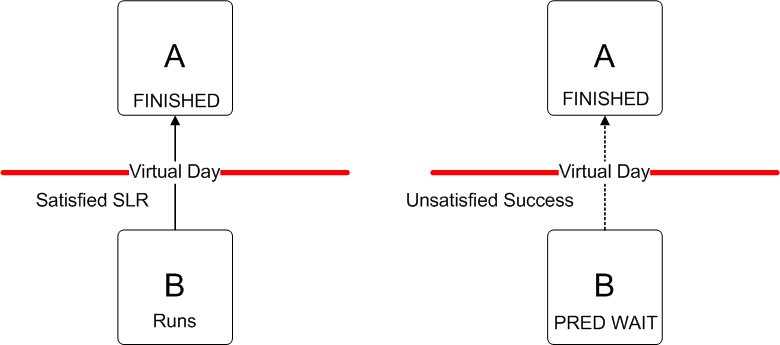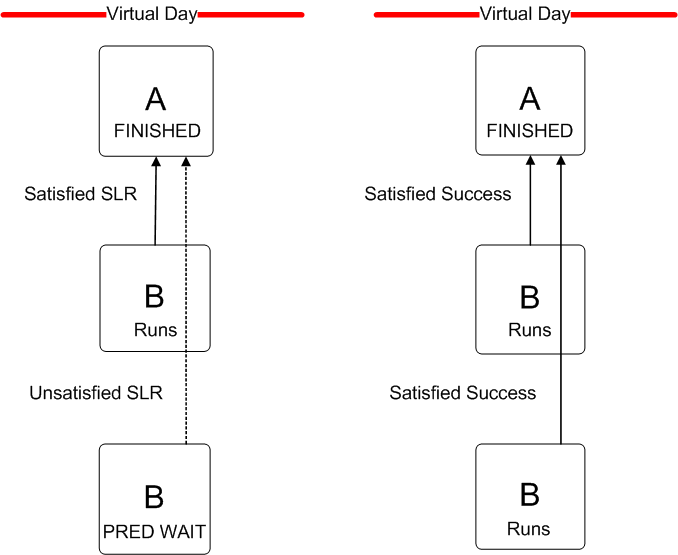
Predecessor requirements can be met across a virtual day for a Success since last run predecessors only.
Success since last run predecessors are used when external predecessors need to be evaluated across more than one virtual day or multiple times within a virtual day.
Success since last run predecessors are only available for external predecessors. The requirements for Success since last run predecessors are the same as success predecessors, except they do not adhere to the virtual workday. Success since last run predecessors are used when external predecessors need to be evaluated:
Examples for each are described below.
In order to satisfy an Success since last run predecessor link, a predecessor task must exist in History.
Satisfying Predecessors Across Virtual Workdays
Suppose you have a nightly batch window that starts each night at midnight. The exception to your batch cycle is a particular task that runs prior to the start of the virtual workday. There may be another task that needs to reference that task. Success predecessor requirements will not be met if the predecessor task ran before the start of the current virtual day.
For example, task B has a Success since last run predecessor link to task A. The diagram on the left in the diagram below shows that the predecessor requirements for task B are satisfied even though task A runs and finishes prior to the start of the current virtual day. Therefore task B runs.
When task B has a Success predecessor link to task A, task B's predecessor requirements are not met. The diagram below on the right shows that the predecessor requirements for task B are not satisfied when task A runs before the virtual day. In that case, task B stays in a PRED WAIT status.

Predecessor requirements can be met across a virtual day for a Success since last run predecessors only.
The Success predecessor requirement for task B shown on the right would be satisfied on insert if task A includes a schedule, but is not scheduled to run today.
Requiring Predecessor Requirements to be Satisfied Each Time in a Virtual Workday
There may be some tasks you wish to run several times in a virtual day. Each time they run, you want their predecessor requirements to be re-evaluated. The diagram below shows that the predecessor's requirements for the second run of task B are not met with a Success since last run predecessor. This is because task A did not run again since the last time task B ran. With a Success predecessor from task B to task A, the predecessor requirements for every instance of B in the current virtual day will be satisfied as soon as task A runs the first time.

Success since last run predecessor requirements are not met when a task runs twice successively without its predecessor task running.